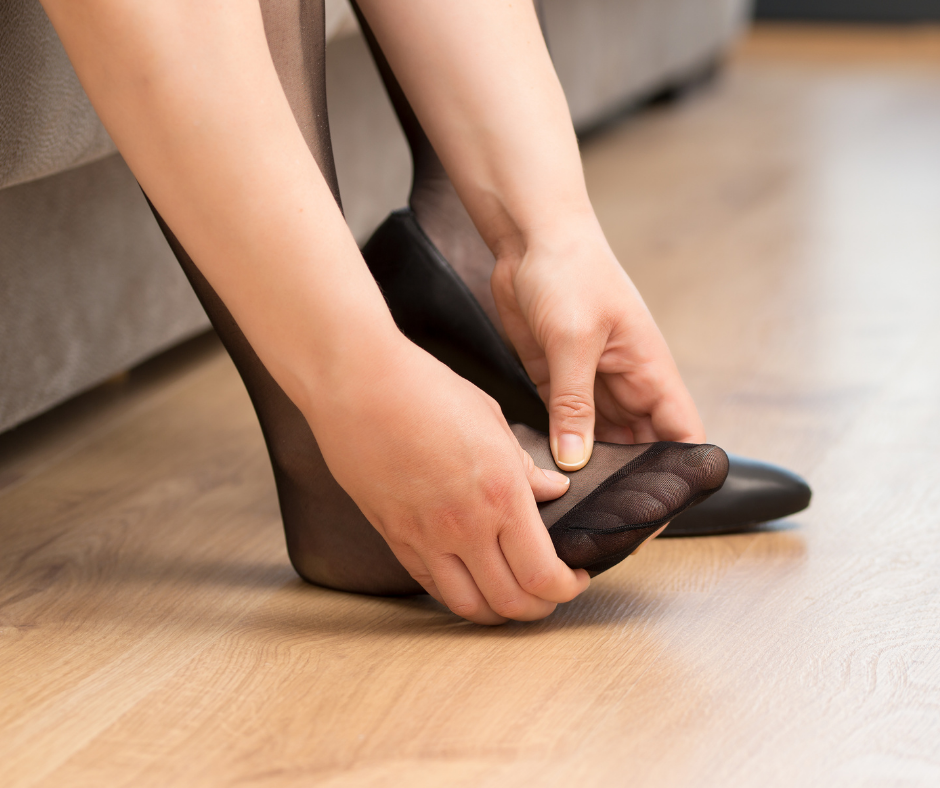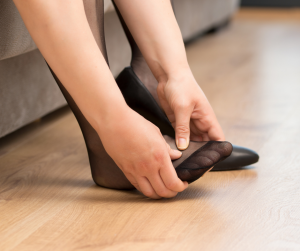
 We all know and have experienced that uncomfortable prickling, tingling, numbing sensation that we call pins and needles countless times – but why do we get pins and needles? And what can we do to help make the feeling go away so we can get on with our day?
We all know and have experienced that uncomfortable prickling, tingling, numbing sensation that we call pins and needles countless times – but why do we get pins and needles? And what can we do to help make the feeling go away so we can get on with our day?
Today, the My FootDr team are sharing the causes, considerations and treatments for pins and needles in the feet, which we medically refer to as paraesthesia – and there may be a lot more to it than you think!
What Are Pins And Needles?
First thing’s first. Pins and needles are the result of either our nerves or our blood vessels being compressed or damaged. While you may already know that our nerves are responsible for carrying the messages to the brain for anything we touch and feel, our blood vessels are just as important here, as they support the function of the nerves, delivering oxygen and nutrients to them.
Your blood vessels rely on your nerves too – when your blood vessels widen and narrow, which they need to do to complete basic functions like regulating our temperature and giving muscles the right supply of blood they need at different times, they do so with the help of the nerves. This means when either is damaged or impaired, we can experience feelings of pins and needles.
Why Am I Getting Pins And Needles In My Feet?
There are many potential causes of pins and needles, which our podiatrists have described below. What you must know is that while some causes are harmless and temporary, other causes of pins and needles (that are usually long-lasting) may be your first sign that something is wrong, and you need a medical assessment. If your pins and needles aren’t resolved using our tips below, you must let your GP know.
1. Your foot or leg has fallen asleep
Our feet can ‘fall asleep’ when our posture puts pressure on our nerves or blood vessels leading down to the feet or legs, impairing their function. You may have been sitting or kneeling on your feet for long periods, crossing your legs, having a child on your lap or be wearing clothes or shoes that are too tight.
2. Nerve problems
If your nerves have been damaged or are inflamed, you may experience pins and needles. This may be as a result of consuming too much alcohol which can be toxic to the nerves, nerve disease, medical conditions like multiple sclerosis, fibromyalgia or strokes, or from physical injuries, like getting hit hard in the leg with a soccer ball.
3. Diabetes
Leading on from nerve problems, diabetes is a common cause of pins and needles that we see and help manage. The elevated blood sugar in your body gradually damages the nerves and blood vessels, resulting in a range of symptoms, from pins and needles to burning, numbness, and ultimately the complete absence of sensation.
4. Restricted blood flow
When your blood flow is restricted, pins and needles are one of the effects. This may be from something like peripheral arterial disease (PAD) which restricts the amount of blood circulating through the lower limbs, and may be associated with weakness. It may also be related to temperature, as our blood vessels naturally narrow and constrict when exposed to cold temperatures, restricting the flow of blood. If your toes are also white in appearance, your pins and needles may be a side effect of Raynaud’s disease.
5. Tarsal Tunnel Syndrome Or Mechanical Nerve Compression
Your nerves and arteries run through many passages and spaces as they make their way from your chest and spine down your legs and to your feet. Depending on how we move, and the size of these spaces, we may narrow the spaces to the point that they press on the nerves and arteries, causing pins and needles.
Tarsal tunnel syndrome is a great example of this that we treat often, where the posterior tibial nerve that runs down the leg and crosses the inside of the ankle gets compressed as it runs between the tarsal bones and the overlying ligaments at the ankle (hence the term ‘tarsal tunnel’). This compression can occur anywhere down the leg, and you can often tell where the compression site is by where you feel the pins and needles. If you’re feeling it all the way down the leg and in the foot, you may have sciatica.
Wearing tight, narrow or ill-fitting footwear is another common cause, with the shoes compressing all the structures in the feet. Tumours, cysts and other growths can also cause compression.
Hyperventilation and anxiety
It’s worthwhile mentioning that hyperventilation and anxiety can also cause pins and needles because they can cause the blood vessels to narrow. So if you’re feeling anxious or starting to take rapid, short breaths and feel pins and needles, it’ll likely be related.
Getting Rid Of Pins And Needles At Home
Getting rid of pins and needles effectively does rely on finding the cause of your pins and needles. If your nerves or blood vessels have been compressed from posture or pressure, it can be as simple as changing your position, uncrossing your legs, or changing out of the tight clothing to get rid of the pins and needles within one to two minutes. Try:
- Standing up and shaking your feet and legs
- Walk it off
- Change your shoes into ones that are properly-fitting, comfortable, supportive and not restrictive
- Wiggle your toes and move your feet in circles
Remember, Pins And Needles Can Be A Sign Of Something Serious
If the methods above don’t help you see any improvement within ten or so minutes, it could be a sign that something else is going on that needs further investigation. This is where we can help. If you’re experiencing problems like mechanical nerve compression in your feet or legs, including tarsal tunnel syndrome, our podiatrists can adjust the alignment of your lower limbs and help ‘open up’ the joint spaces using treatments like custom foot orthotics.
If the cause is a medical condition like peripheral arterial disease, an appointment with your GP is recommended to help you manage the effects – which may go further than simply producing pins and needles.
Book your appointment with our experienced podiatry team by calling us on 1800 FOOT DR or book your appointment online.


